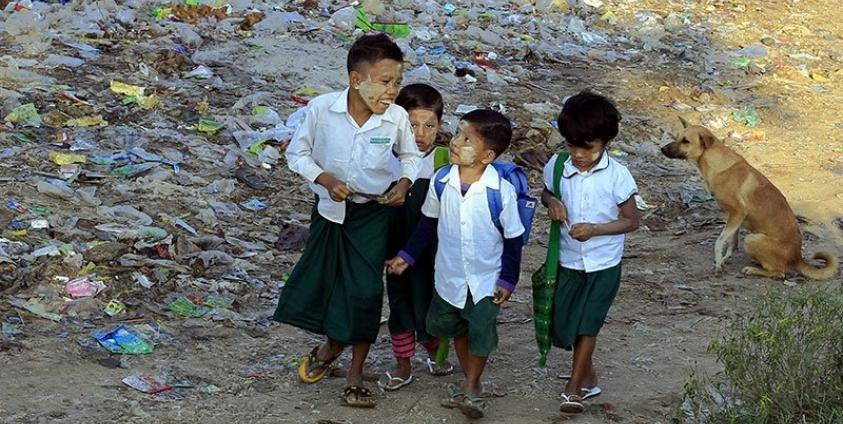A new census report by the UNFPA reveals that while youth literacy in Myanmar is relatively high at 94 per cent, this still means that more than half a million young people cannot read or write.
This is primarily due to low school attendance. Almost half a million children aged 7-15 have never attended school. School attendance differs by age, but peaks at only 85 per cent for nine year-olds. Less than one in three teenagers aged 15-19 go to school.
“Young people represent a huge source of potential for Myanmar’s development. Government policy needs to focus on improving the standard of education, as well as on increasing school attendance and youth literacy. It is also essential to invest in skills training for those who have already left school. Education must reach all groups in society so that every young person’s potential is fulfilled, and no one is left behind”, says Janet Jackson, UNFPA Representative for Myanmar.
The findings come from the 2014 Myanmar Population and Housing Census Thematic Report on Education. At a critical time of development, the report underscores the need to improve education in Myanmar at all levels. The data and analysis in the report highlight policy implications, and set out in detail where action is needed. The findings call for a concerted effort by government, civil society, academia, and international organizations to use education as a platform to improve the lives of people of Myanmar now and for future generations.
A literate population is necessary for the socioeconomic development of a country. Myanmar’s adult literacy rate is 89.5 per cent. However, this relatively high figure conceals stark disparities within the population. For example, while the difference between female and male literacy is relatively small up to the age of 50, gender differences become more apparent at higher ages. Lower literacy among older women reflects low female school attendance in the past. Rural literacy is lower than urban literacy, and it varies significantly across states and regions. In Shan, for example, only 64.6 per cent of people can read or write, and 44.9 per cent of adults have no schooling at all.
The report shows that educational attainment in Myanmar is low: 61.3 per cent of the population aged 25 and over have no education at all, or have only attended primary school. Only 7.3 per cent of the population aged 25 and over have a university-level degree. The report also shows that, proportionally, more women than men pursue higher education. Of people who hold a postgraduate degree, 63 per cent are women, and 37 per cent are men.
“For Myanmar to take advantage of the human capital that these highly educated women represent, women need better access to work opportunities, including leadership roles, outside the home. Only half of women in Myanmar (50.5 per cent) are in the labour force, compared to 85.6 per cent of men”, says Janet Jackson, UNFPA Representative for Myanmar.







